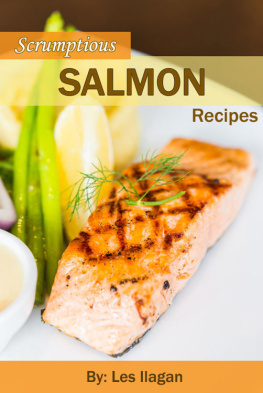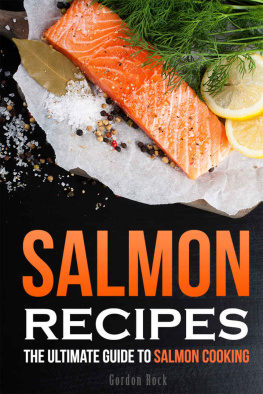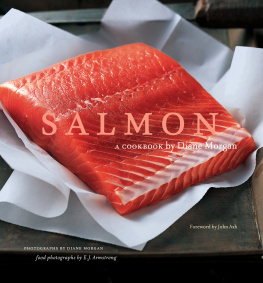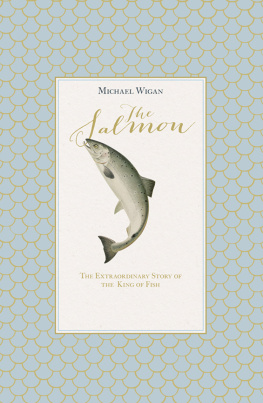Contents
To my best friend and wife, Holly
Introduction
Why salmon?
Whether making a meal at home or working in a restaurant, Scottish salmon is my favourite fish to cook. I dont think that any other fish is quite as versatile salmon can be cooked in many different ways and goes well with so many different ingredients. The hardest part of writing this book wasnt coming up with 100 salmon recipes, but deciding which ones to leave out.
In many ways, salmon is the ultimate fast food as it is so quick and easy to prepare. For some of the recipes in this book, it takes less than ten minutes from unwrapping the salmon to serving it up as a complete meal. When Im feeling peckish, for example, my Lemon Butter Baked Salmon with Tagliatelle and Parsley (see ) can go from fridge to fork, all in the time it takes to cook the pasta. Now thats real fast food.
Salmon is currently the most popular fish on sale in supermarkets in the United Kingdom, and it is easy to see why. Youll find ready skinned and boned packs of fillets that are easy to use, consistently tasty and require zero preparation perfect for those with a busy lifestyle. Serve salmon at your dinner party and your guests will feel truly pampered, yet its also perfect as a family lunch or speedy supper without having to worry about breaking the bank.
A balanced diet is every bit as important as preparation time and budget, and salmon comes out top here, too. Its a fantastic source of omega-3 fatty acids, which can help prevent heart disease, and is a tasty provider of protein as well. It also lends itself perfectly to health-conscious cooking methods: steaming, poaching and grilling are all simple ways to retain the subtle sea-like flavour of salmon. To be honest, all you really need is a frying pan and a drizzle of sunflower oil.
Farmed salmon or wild salmon?
Fifteen years ago, there was plenty of wild Scottish salmon available and it was a natural product, caught by Scottish fishermen. Around the mid-eighties, the stocks of the fish began to decline, probably as a result of both changing climate conditions and unscrupulous offshore netting.
This led to a shortage of wild salmon, and as a consequence, salmon farming increased dramatically off the west coast of Scotland. Initially, the quality of this salmon was not as good as wild salmon, but it quickly improved. Like any type of farming, the good farmers produced great products; the salmon from farms in Shetland stood out in particular. These farmers situated their salmon pens in areas with a high tidal flow, they did not overcrowd their pens, and they did not try to force the fish to mature as quickly as possible. Instead, their salmon grew naturally, were fed only when they needed to eat and, within about eighteen months, grew into mature salmon. The quality was excellent, the price was stable and the salmon was available virtually all year round. Everyone was happy.
Around about 1986, as wild salmon became both scarcer and more expensive, I had started using farmed Shetland salmon in my first restaurant and by 1990, I was using nothing but, because it was such a good product. Then it all started to go wrong.
Between 1990 and 1995, the quality of Scottish farmed salmon went into decline. It transpired that many of the Scottish salmon farmers had tried to make their product compete as a commodity in the global marketplace. For various reasons, countries such as Chile and Norway could produce farmed salmon more cheaply than the Scots, and rather than competing as a premium quality product, Scottish farm salmon was trying to compete on price. Quantity rather than quality became the driving force. Intensive rearing practices had disastrous consequences on the salmons texture and taste, as well as causing knock-on environmental problems.
I was concerned. Scotlands natural larder has an enviable reputation that poorly farmed salmon was beginning to tarnish. Around that time, I started working as a consultant with a salmon feed company. They realized that unless the situation improved, the Scottish salmon farming industry was in danger of disappearing, and with it their market for salmon feed. So they bought a number of fish farms on Orkney and started to reintroduce high farming standards. They believed that farmed Scottish salmon should not compete with other countries on price; it should compete on quality and be at the top end of the market. Scotlands natural sea resources provided the perfect environment to do just this.
At the time of writing, I do not believe that we have quite reached the standard of the best farmed salmon of twelve years ago, but we are making vast progress and good-quality Scottish salmon is now generally available at a reasonable price. One of the most exciting advances for me has been the development of organic Orkney salmon by Aquascot Seafarms, the sponsors of this book, who supply all the major supermarkets with top quality fish. I think this is as close as farmed salmon has got to the quality of wild fish.
Boding well for the future of the Scottish salmon industry, organic Orkney salmon is fetching a substantial premium over conventionally farmed salmon. My hope for the Scottish salmon industry is that companies such as Aquascot will up the game for everybody else. When other farmers see that it is possible to get a premium price for a premium product, then hopefully the whole industry will improve their standards. That way we can all benefit.
How to use this book
Youve bought the salmon, so what should you do with it? The basic cooking techniques described in this book are easy, and the first recipe (see ) and youll be wondering why you never thought of it before.
Each recipe has been categorized, illustrating how easy it is to make, and whether its best as an informal supper or to impress your dinner party guests. Theres a guide to preparation time from start to finish, and each cooking stage is covered in easy-to-follow step-by-step instructions. For me, this is a book full of wonderful recipe revelations, simple and straightforward to use. I hope it will become a regular reference book in your kitchen.
Buying salmon
Buying good-quality salmon is essential for these recipes. Quality salmon always has a nice gloss to its surface; avoid a dull fish at all costs and steer clear of loose, flabby flesh the fillet should be firm and bright. All salmon has white fat lines, but these should be thin and not too dominant. Check for gaping in the flesh; mass-produced, badly farmed salmon has a flesh structure that is insufficiently developed to hold it together and it gapes open. Ask where it has come from. In terms of sea conditions, Orkney and Shetland are best, and Scottish is always preferable to Norwegian fish. Even if youre not planning on buying salmon, always have a look at whats on offer and youll soon learn to distinguish the good from the bad. Practice makes perfect.
Next page

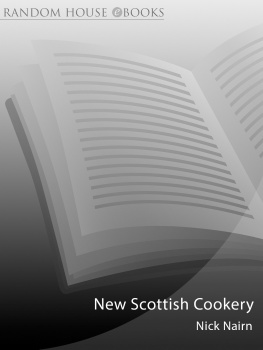
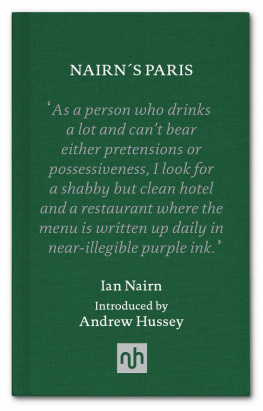
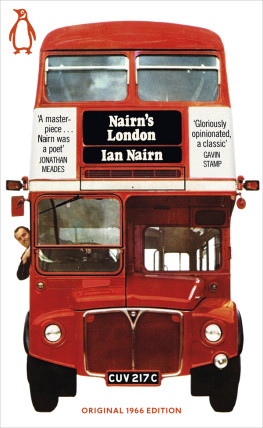

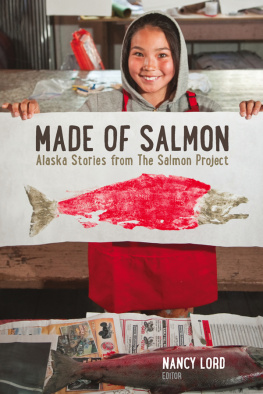
![Mila Mason - Salmon 365: Enjoy 365 Days With Amazing Salmon Recipes In Your Own Salmon Cookbook! (Best Seafood Cookbook, Seafood Soup Cookbook, Seafood Cookbook For Beginners, Grilled Seafood Cookbook) [Book 1]](/uploads/posts/book/288400/thumbs/mila-mason-salmon-365-enjoy-365-days-with.jpg)

